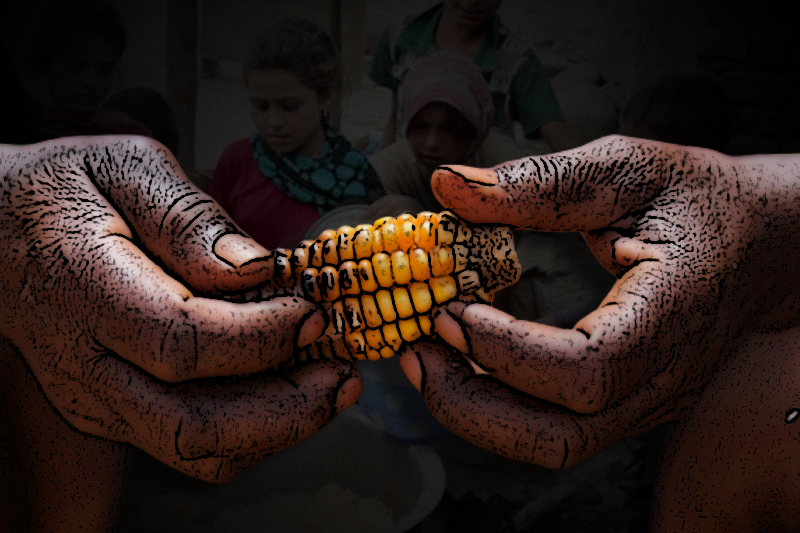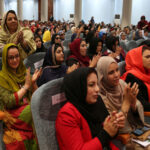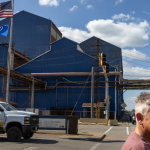
Children face the dearth of food scarcity in Afghanistan as famine daunts the country
 Afghanistan – A klutzy hospital in southern Afghanistan’s Kandahar presents a melancholic sight of emancipated children. As the children of varied age groups lie listless in their beds, a three year old girl Kamila lies rubbing her ear in pain, too weak to cry. Kamila looks like an infant due to severe malnourishment – the wrinkled skin sags off her clearly marked out skeleton, stretching around her distended stomach. Living under food scarcity for eight months now, her grandmother explains the poor condition of family. Kamila’s family is just one among millions of Afghans who are currently living under extreme food shortages as harsh winter and economic crisis blows a double whammy.
Afghanistan – A klutzy hospital in southern Afghanistan’s Kandahar presents a melancholic sight of emancipated children. As the children of varied age groups lie listless in their beds, a three year old girl Kamila lies rubbing her ear in pain, too weak to cry. Kamila looks like an infant due to severe malnourishment – the wrinkled skin sags off her clearly marked out skeleton, stretching around her distended stomach. Living under food scarcity for eight months now, her grandmother explains the poor condition of family. Kamila’s family is just one among millions of Afghans who are currently living under extreme food shortages as harsh winter and economic crisis blows a double whammy.
The human rights organizations have warned of famine in Afghanistan and urged more foreign aid focusing on the most vulnerable groups in country, including children and women. Though Taliban has acknowledged the economic problems that Afghanistan is facing, it had blatantly rejected claims of any famine crisis. “No one will starve cause there is no famine and the cities are full of food,” said Taliban spokesperson Zabihullah Mujahid in a statement to CNN.
Related Posts
Afghanistan has always been at receiving end of crises, even before Taliban takeover in August this year. Poverty and food shortage are a major issue in the country as it has faced multiple spells of droughts in recent years, along with economic fallout, political conflict and then the pandemic. Three months since foreign troops retracted from Afghanistan and Taliban seized the power, the crisis has evidently worsened exponentially. As the troops have exited, the foreign aid reserves have rapidly depleted that was running country through support from aid workers, crucial services and supporting the country’s economy.
Back to back droughts in the country has worsened condition of majority of Afghans who rely on agriculture for their livelihoods. This year alone 40 per cent of harvest in Afghanistan has been lost due to drought, said WFP (World Food Program). Food shortage has skyrocketed the cost of basic food like wheat. “We only have water and bread — sometimes we have it, but sometimes there’s nothing to eat,” said Musafer, a laborer and shopkeeper. Richard Trenchard, the Food and Agricultural Organization Representative in Afghanistan, said explaining the disastrous condition in Afghanistan, “Every farmer we’ve spoken to has lost almost all of their crops this year, many were forced to sell their livestock, they have accumulated enormous debts and simply have no money.”
Deborah Lyons, head of the UN Assistance Mission in Afghanistan, in November warned that famine risk that earlier was just restricted to small number of rural areas, are now being faced by 10 out of 11 most densely populated areas of urban Afghanistan.
WHO (World Health Organization) is among agencies that has resumed sending essential medical supplies to the country. In November, WHO said that the four shipments airlifted so far should be able to cover 1.5 million patients. The UN Development Program (UNDP) provided $15 million to health sector of Afghanistan in November, helping pay wages to over 23,000 health workers, said a UN news release. But foreign aid needs to be resumed, stress the rights organisations. The stemming of aid by western countries to tackle the Taliban is having a direct impact on starving people of Afghanistan. Spiegel, the doctor who visited Afghanistan for WFP, said, “The US, UK, EU have to make some decisions quickly or its going to be too late and there’s going to be a tremendous amount of unnecessary death.”














